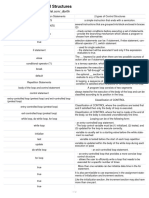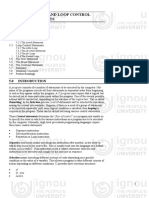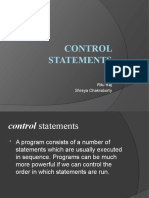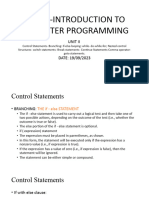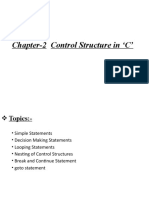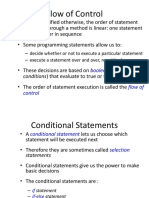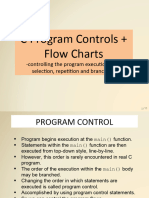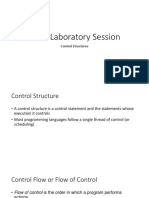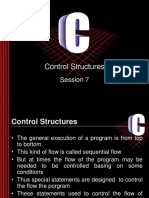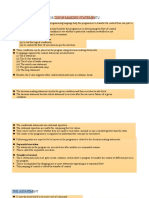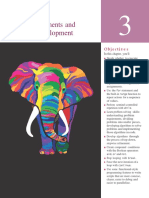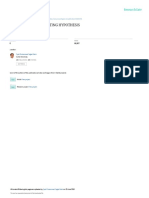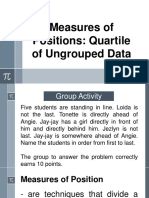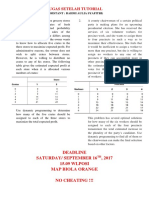0% found this document useful (0 votes)
14 views6 pagesCOS201 Lecture 2 (Updated)
The document discusses control structures in programming, which alter the flow of execution in a program. It outlines three main types of control statements: sequential, selection (branching), and repetition (looping), explaining their functions and providing examples. Additionally, it includes an assignment for students to create flowcharts based on the concepts presented.
Uploaded by
wwwtope947Copyright
© © All Rights Reserved
We take content rights seriously. If you suspect this is your content, claim it here.
Available Formats
Download as PDF, TXT or read online on Scribd
0% found this document useful (0 votes)
14 views6 pagesCOS201 Lecture 2 (Updated)
The document discusses control structures in programming, which alter the flow of execution in a program. It outlines three main types of control statements: sequential, selection (branching), and repetition (looping), explaining their functions and providing examples. Additionally, it includes an assignment for students to create flowcharts based on the concepts presented.
Uploaded by
wwwtope947Copyright
© © All Rights Reserved
We take content rights seriously. If you suspect this is your content, claim it here.
Available Formats
Download as PDF, TXT or read online on Scribd
/ 6








